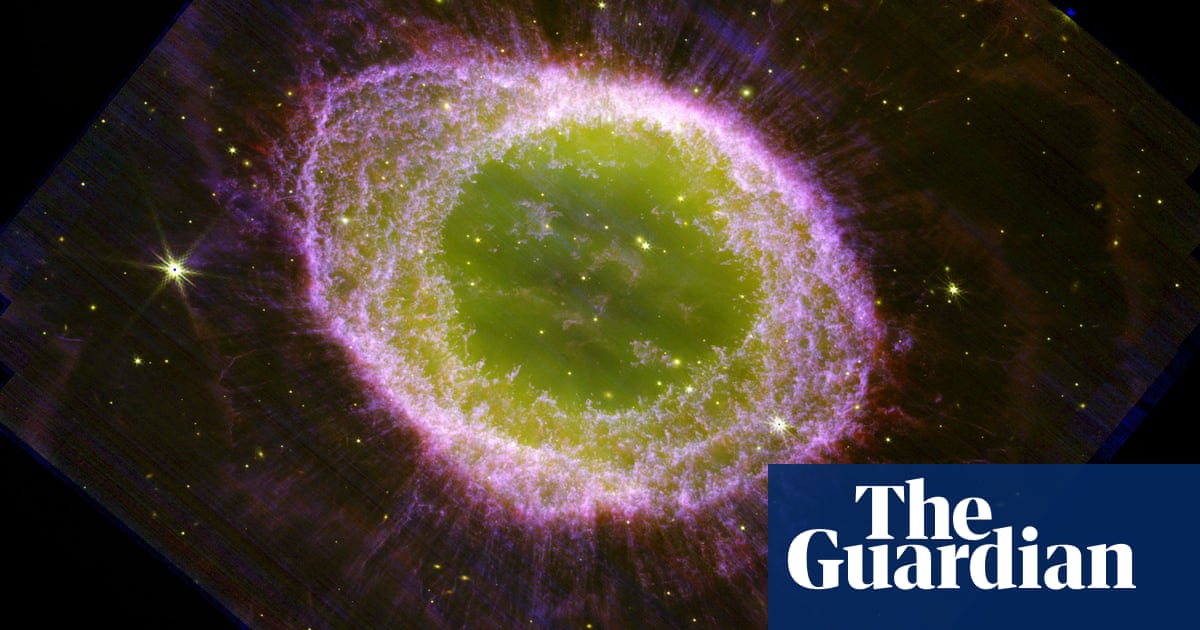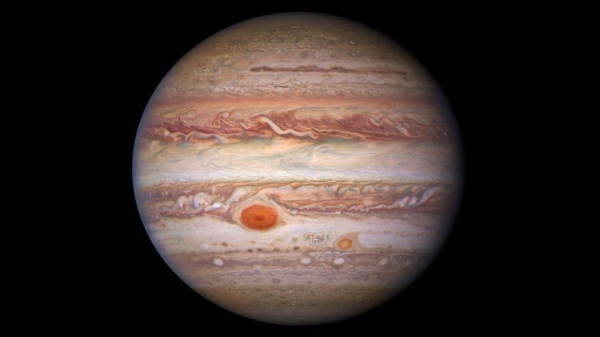
Never before have we been able to view the universe the way the James Webb Space Telescope is showing it to us now.
Our naked eye would never be able to see what the telescope sees: traveling through light and space, James Webb can see the origins of the universe — something our minds can hardly begin to grasp.
Working like a time machine, the first images shared by this powerful telescope on July 12 showed us far-off galaxies, the death of stars, and the atmosphere of planets outside our solar system.
Now NASA scientists have released new shots of the solar system"s biggest planet, describing the results on Monday as "quite incredible".
The James Webb Telescope took the photos back in July, capturing unprecedented views of Jupiter’s northern and southern lights, and swirling polar haze. Jupiter"s Great Red Spot, a storm big enough to swallow Earth, stands out brightly alongside countless smaller storms.
One wide-field picture is particularly dramatic, showing the faint rings around the planet, as well as two tiny moons against a glittering background of galaxies.
"We’ve never seen Jupiter like this. It’s all quite incredible," said planetary astronomer Imke de Pater, of the University of California, Berkeley, who helped lead the observations.
"We hadn’t really expected it to be this good, to be honest," she added in a statement.
The infrared images were artificially colored in blue, white, green, yellow, and orange, according to the US-French research team, to make the features stand out.
The latest images come just weeks after another batch of images captured by the James Webb team showed us the Cartwheel Galaxy in more depth, taking us another step further in our understanding of the universe by showing us what happens after two galaxies collide.
Peering through the cosmic dust created by the collision with its infrared cameras, the telescope gave us a shot of how the Cartwheel Galaxy is changing after a run-in with another smaller galaxy billions of years ago.
Scientists think that the Cartwheel Galaxy, a ringed galaxy over 500 million lightyears away from our planet which owes its name to its bright inner ring and colorful outer ring, was once part of a large spiral like the Milky Way, before another galaxy smashed through it.
The galaxy’s whole look, which reminded scientists of the wheel of a wagon, is due to that high-speed collision, according to NASA. From the center of collision, the galaxy’s two rings have been expanding outwards, creating that rare ringed shape.
Scientists have never before been able to see clearly into the chaos of the Cartwheel Galaxy and make sense of it.
The Hubble Space Telescope had already peered into the galaxy, but the amount of dust surrounding the Cartwheel Galaxy prevented the telescope from observing the phenomena taking place within the galaxy.
But now, thanks to the James Webb Telescope" infrared cameras, scientists are able to look into the galaxy’s bright center.
To do so, an image is created by combining Webb’s Near-Infrared Camera (NIRCam) and Mid-Infrared Instrument (MIRI), which are able to see through the dust and reveal wavelengths of light impossible to observe in visible light conditions.
The image obtained shows the formation of stars in the aftermath of the galaxies colliding - a process which is not yet completely understood.
The bright core at the center of the galaxy contains hot dust, says NASA, with the brightest areas being home to gigantic young star clusters.
What you can see on the outer ring, on the other hand, is the formation of new stars.
The Cartwheel Galaxy is still going through changes and will continue to transform, promising to reveal more secrets about how galaxies evolve over time, even though it might take billions of years.
NASA and the European Space Agency"s $10 billion (€10 billion) successor to the Hubble Space Telescope rocketed away at the end of last year and has been observing the cosmos in the infrared since summer.
Scientists hope to behold the dawn of the universe with Webb, peering all the way back to when the first stars and galaxies were forming 13.7 billion years ago.
The observatory is positioned 1.6 million km from Earth. — Agencies












